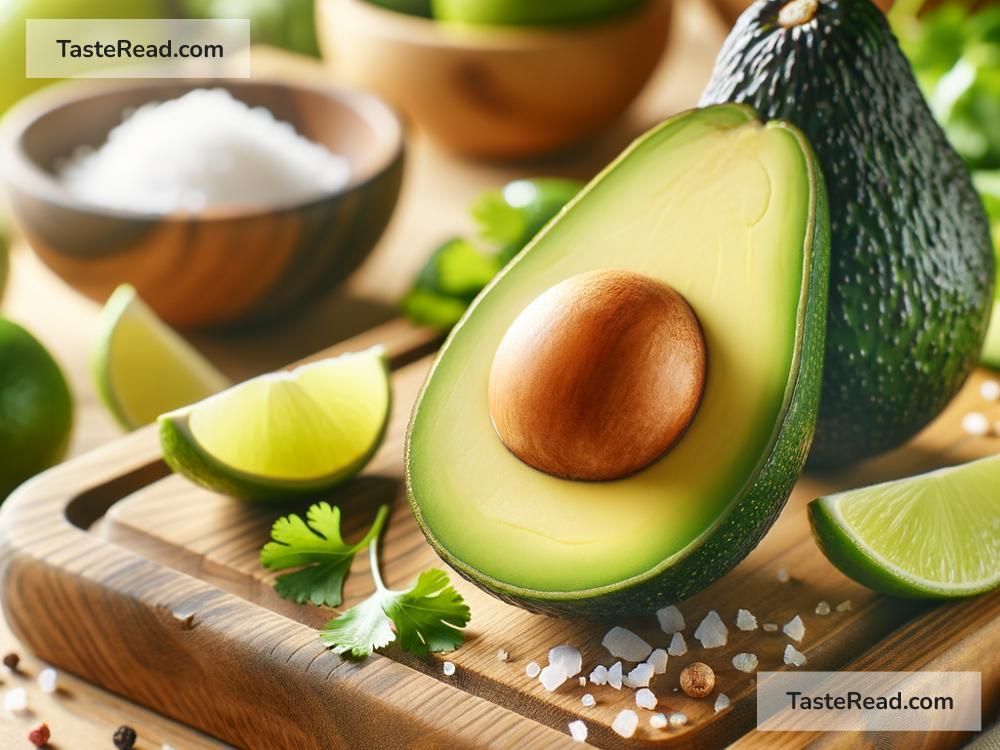The Mystery Behind Avocados and Their Creamy Texture
Avocados are one of nature’s most fascinating foods. Known for their rich, buttery texture and ability to elevate any dish, they’ve become incredibly popular worldwide. Whether sliced onto toast, blended into guacamole, or mixed into smoothies, avocados always seem to deliver an unforgettable experience. But have you ever wondered why they’re so creamy and soft? What makes avocados stand out from other fruits? Let’s uncover the mystery behind their unique texture in simple English.
What Are Avocados?
First, let’s understand what avocados really are. While we often think of avocados in savory terms, they’re technically a fruit—specifically a berry! Originating from Central and South America, avocados grow on trees that thrive in warm climates. They have a dark green, leathery skin and golden-green flesh inside. At the center, you’ll find a large seed, commonly called the “pit.”
But what truly makes avocados special lies underneath that skin: their smooth, creamy interior. It’s what people have fallen in love with, and it’s the key to their versatility in cooking.
Why Are Avocados So Creamy?
The answer lies in the avocado’s unique composition. Unlike other fruits—which mostly contain water and carbohydrates—avocados are packed with healthy fats. In fact, around 70–80% of their calories come from fat! This is unusual for fruits, as they’re typically sweeter and not fatty.
The specific type of fat in avocados plays an important role in their texture. The majority of the fat is monounsaturated fat, which keeps the fruit soft, smooth, and easy to mash. These fats create a luxurious sensation when you bite into an avocado or spread it on bread. Monounsaturated fats are also liquid at room temperature, and this contributes to the melt-in-your-mouth feel.
To compare, fruits like apples or bananas don’t have nearly the same fat content. Apples are crisp and juicy, while bananas are soft but nowhere near as creamy. Their makeup consists more of sugar and starches, which results in a completely different texture.
The Role of Water and Fiber
The creamy texture of avocados isn’t just because of the fats, though. Water and fiber also play a role in making them smooth and satisfying. Avocados are about 70% water, just like many other fruits. This water content balances out the fat, helping the avocado stay moist without being greasy.
Fiber, on the other hand, adds structure to the avocado flesh. There’s a fine balance between fiber and fat in avocados—too much fiber would make them feel gritty, but too little would make them too soft or mushy. This balance gives avocados their iconic velvety texture.
Why Don’t All Fruits Feel Like Avocados?
Avocados really stand out among fruits because most other varieties have different chemical compositions. For example, berries like strawberries are juicy because they’re full of water and low in fats. They rely on sugars for sweetness and their structure comes mostly from natural plant fibers.
The avocado is like nature’s exception to the rule. It’s almost as though it redefined what a fruit can do! Its fat content makes it nutritious and filling, while its creamy texture makes it irresistibly versatile. This combination is rare, and it’s why avocados feel so unique compared to other fruits.
Ripening: The Secret to Creaminess
Another important factor in the avocado’s creaminess is its ripeness. When an avocado is ripe, the fats, water, and fibers are all fully developed and perfectly balanced. The texture becomes smooth and buttery, and the flavor is mild yet rich.
If you’ve ever tried eating an unripe avocado, you’ll notice that it’s hard and chalky, with little to no creaminess. This happens because the fats haven’t matured yet. On the other hand, if the avocado becomes too ripe, its texture turns mushy, and it loses the luxurious feel.
This is why picking the right avocado at the store is so important. A ripe avocado will feel slightly soft when you press it gently, but not overly squishy. Timing is everything when it comes to enjoying its creamy magic.
Avocados: Healthy and Delicious
Besides texture, avocados are highly valued for their health benefits. The monounsaturated fats in avocados are good for your heart—they help reduce bad cholesterol and improve overall cardiovascular health. They’re also packed with vitamins and minerals, including Vitamin K, Vitamin E, potassium, and antioxidants.
This mix of nutrition and taste is hard to beat. Avocados make healthy eating more enjoyable because they feel indulgent even though they’re good for you. They’re a perfect choice for people looking to maintain a balanced diet without sacrificing flavor.
Conclusion
Avocados are truly special. Their creamy texture is no accident—it’s the result of their unique combination of healthy fats, water, and fiber, carefully balanced by nature. Unlike most fruits, avocados have redefined what it means to be versatile in the kitchen, finding their way into every meal from breakfast to dessert.
Whether you eat them on toast, in guacamole, or straight out of the skin with a spoon, avocados are proof that simplicity can be luxurious. So the next time you enjoy an avocado, think about the natural mystery behind its creaminess—and savor every bite!


